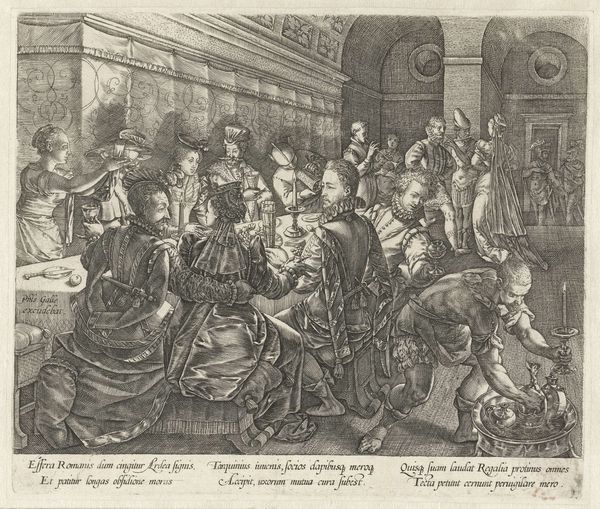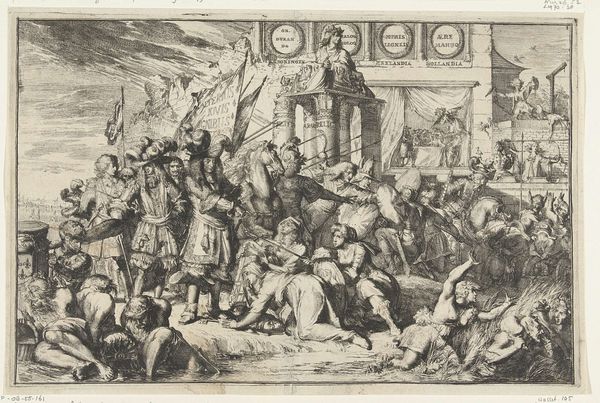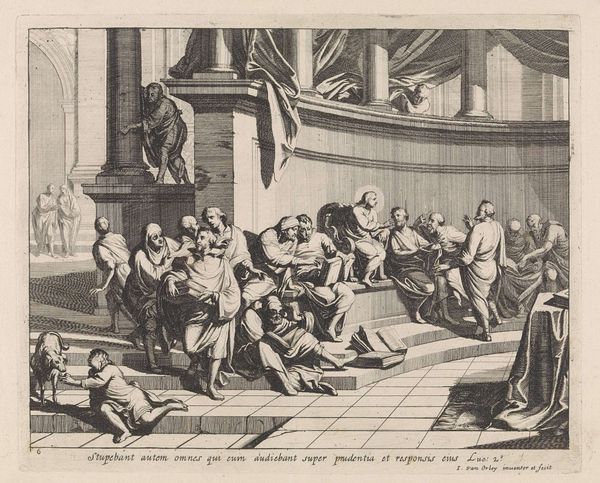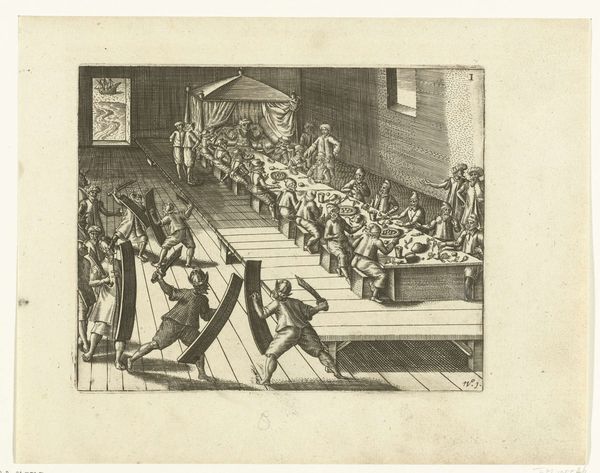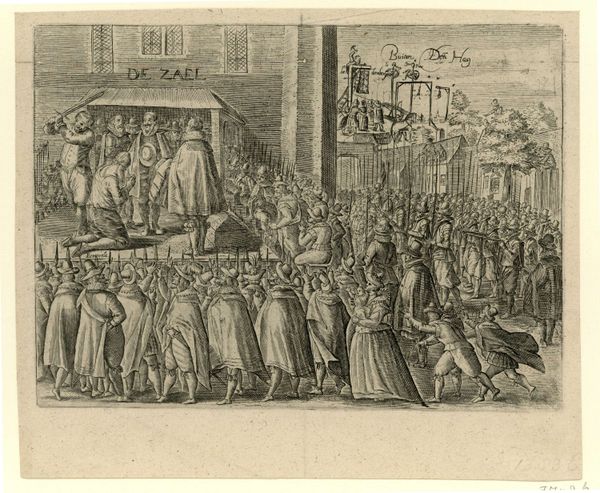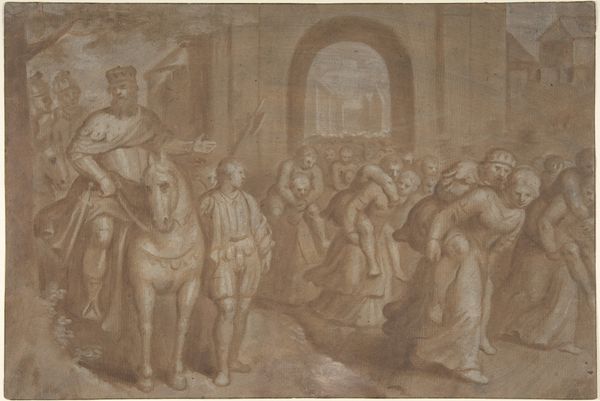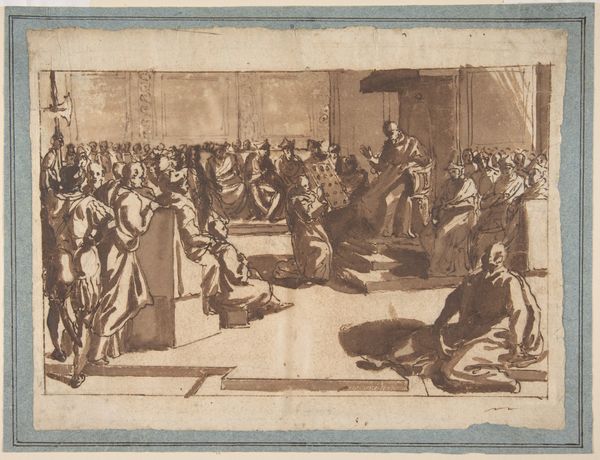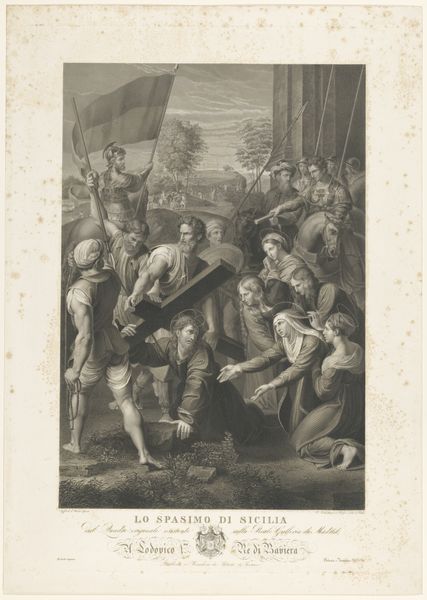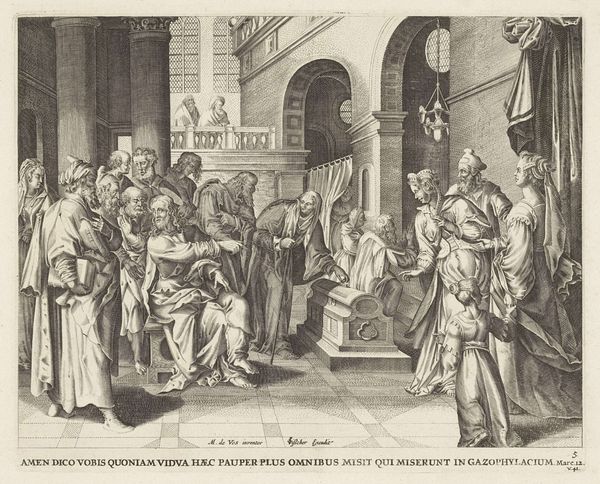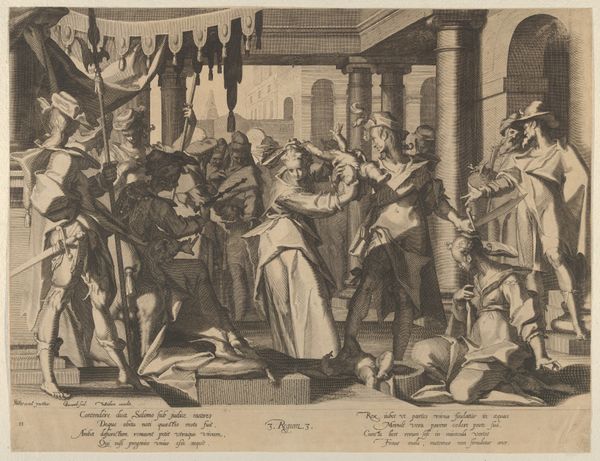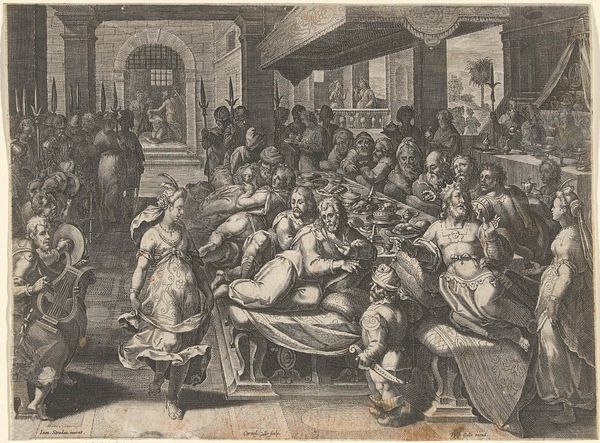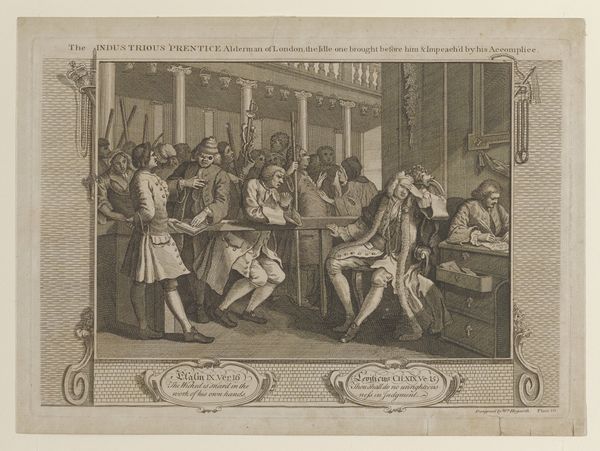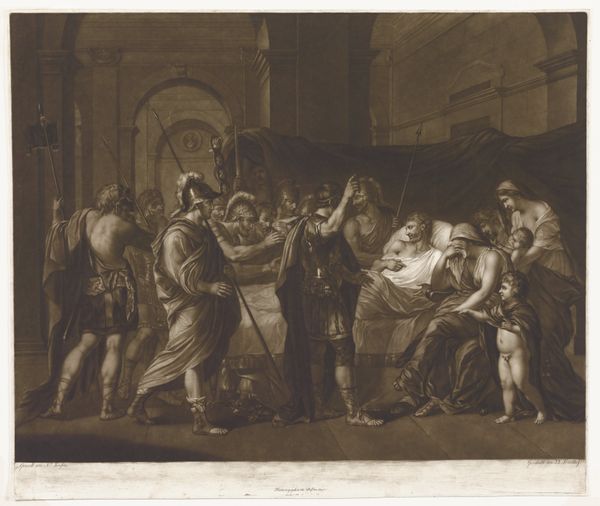
print, engraving
#
narrative-art
#
baroque
# print
#
figuration
#
history-painting
#
engraving
Dimensions: height 412 mm, width 469 mm
Copyright: Rijks Museum: Open Domain
Wenceslaus Hollar created this print, “Ester voor Ahasveros,” using etching techniques, which involved coating a metal plate with wax, scratching an image into it, and then bathing it in acid to eat away the exposed lines. The visual impact of the print relies entirely on these etched lines, varying in thickness and density to create areas of light and shadow, form and texture. The image depicts a scene of royalty and grandeur, and Hollar used the incisive precision of the etching process to capture the opulence of the fabrics, the architectural details, and the emotional intensity of the moment. The etched lines almost resemble the work of a pen, such is their ability to delineate fine detail. Printmaking was an essential part of the economy of art in Hollar’s time, as prints could be made in multiples and widely distributed. So while the scene depicted is one of elite power, the image itself participates in a much wider network of labor, politics, and consumption. It reminds us that all making is both a material process and a social act.
Comments
No comments
Be the first to comment and join the conversation on the ultimate creative platform.
